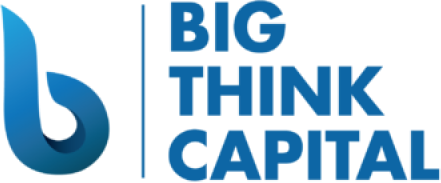How to Navigate the Impacts of Recent Inflation Trends on Small Businesses: A Comprehensive Guide for Managing Working Capital and Securing Loans Effectively
Estimated Reading Time: 5 minutes
- Understand the key impacts of inflation on small businesses.
- Implement effective working capital management strategies.
- Explore various loan options and prepare necessary documentation.
Table of Contents
- Understanding Inflation and Its Effects on Small Businesses
- Recent Inflation Trends
- Managing Working Capital Amid Inflation
- Securing Loans During Inflation: What You Need to Know
- Practical Takeaways for Small Business Owners
- Conclusion: Proactive Strategies Lead to Success
- Call to Action
- FAQ
Understanding Inflation and Its Effects on Small Businesses
Inflation refers to the general increase in prices and the decrease in the purchasing power of money. For small businesses, fluctuations in inflation can significantly affect operational costs, consumer behavior, and overall financial stability. Key impacts include:
- Rising Costs: As prices go up, suppliers may increase the costs of goods and services, which can squeeze profit margins.
- Changing Consumer Behavior: With rising prices, customers may become more selective in their purchasing habits, prioritizing essential goods and services.
- Interest Rates: To combat inflation, central banks may raise interest rates, making borrowing more expensive for businesses.
Recent Inflation Trends
In 2025, inflation remains a concern, although the Federal Reserve has made efforts to stabilize the economy through strategic rate adjustments and policies. According to the Bureau of Labor Statistics, the inflation rate has been hovering around 4.5% to 5% in late 2024, impacting various sectors differently. Businesses that rely heavily on materials affected by global supply chain issues may feel a sharper pinch than those in service-oriented industries.
Managing Working Capital Amid Inflation
Effective management of working capital during inflationary periods is crucial. Here are strategies that small business owners can implement:
Maintain an Updated Cash Flow Forecast
Forecasting cash flow can help business owners anticipate the financial impact of inflation. Here are steps to follow:
- Identify Fixed and Variable Expenses: Understand what costs remain constant versus those that change with inflation.
- Analyze Revenue Streams: Evaluate which products or services are most affected by consumer price sensitivity.
- Create Projections: Use historical data to predict cash flow trends and adjust forecasts periodically based on current inflation rates.
Build Strong Supplier Relationships
Negotiating payment terms or prices with suppliers can buffer against rising costs. Strong relationships may lead to:
- Favorable pricing for bulk orders
- Extended payment terms to ease cash flow pressures
- Access to better quality materials at competitive rates
Consider locking in prices for essential goods or services to protect against future price increases.
Explore Financial Buffers
Building a financial buffer ensures you can navigate unexpected cost increases without crippling your operations. Here are practical ways to create that buffer:
- Establish a Reserve Fund: Aim to save a percentage of monthly revenues to cover unexpected expenses.
- Diversify Revenue: Explore new revenue streams that are less sensitive to inflation, such as providing additional services or offerings.
Securing Loans During Inflation: What You Need to Know
When it comes to securing loans in an inflationary environment, business owners must approach the process strategically. Here’s how to enhance your chances of success:
Understand Different Loan Products
There are various financing options available, each suited for different needs and circumstances:
- Working Capital Advances: These are short-term, flexible options that can cover immediate cash flow needs.
- SBA Loans: Although they take longer to process, SBA loans offer lower rates and longer repayment terms, which can be ideal for buffering against inflation.
- Equipment Financing: Invest in equipment that enhances productivity without inflating your operational costs further.
Prepare Your Documentation
Lenders will seek detailed documentation before approving your loan application. Ensure you have:
- Financial Statements: Provide up-to-date balance sheets, income statements, and cash flow documents.
- Business Plans: A comprehensive business plan will demonstrate how you plan to navigate inflation while using the funds.
- Credit History: A strong credit history can bolster your application, even in challenging economic conditions.
Know Your Lender
Researching lenders is essential, as they may have different appetites for risk, especially in inflation-prone environments. Consider:
- Customer reviews or ratings
- Their specialization in funding small businesses
- The terms and conditions they offer
Practical Takeaways for Small Business Owners
Navigating inflation can be challenging, but here are three immediate takeaways to keep your business resilient:
- Implement Regular Financial Reviews: Establish a routine for assessing financial health regularly to adjust your strategies promptly.
- Strengthen Your Credit Profile: Work on improving your credit rating now so that you are better positioned for future borrowing needs.
- Strategically Utilize Technology: Employ financial management software to track expenses and cash flow more effectively.
Conclusion: Proactive Strategies Lead to Success
Inflation can present significant challenges to small businesses, but understanding its effects and strategically managing finances can turn potential setbacks into opportunities. By maintaining a keen eye on cash flow, building resilient relationships with suppliers, and understanding your financing options, you’ll be better prepared to weather inflationary pressures.
At Big Think Capital, we are committed to helping small business owners navigate these complex financial waters. Our team of dedicated funding experts is available to assist you in selecting the right loan products tailored to your unique needs.
Call to Action
Don’t let inflation hold your business back. Visit bigthinkcapital.com today to learn more about our financing options, or speak with one of our funding experts to find the best solution for your business needs. Together, we can forge a path to stability and growth.
FAQ
What should I do if my supplier raises prices?
Consider renegotiating payment terms or building relationships with alternative suppliers.
How can I prepare for a loan application?
Gather comprehensive financial statements, develop a business plan, and maintain a strong credit history.
Are there specific loans for small businesses during inflation?
Yes, options like working capital advances and SBA loans can be beneficial.






